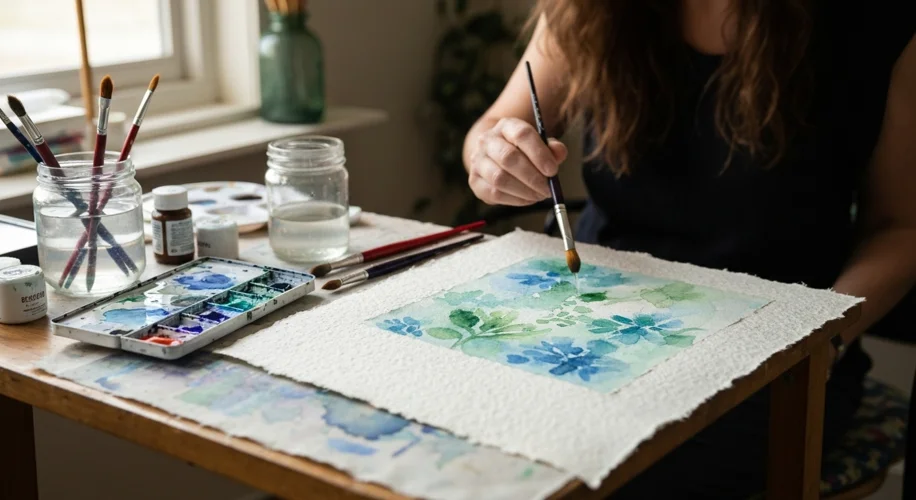It’s August 3rd, 2025, and the summer heat is still lingering, but I’ve been spending a lot of my time indoors, lost in the flow of watercolors. There’s something incredibly mesmerizing about watching pigment bloom and blend on wet paper, a process that feels both spontaneous and controlled.
I’ve always been drawn to the transparency and luminosity that watercolors offer. Unlike oils or acrylics, which can be thick and opaque, watercolor relies on layering and letting the white of the paper shine through. This quality lends itself to creating delicate washes, soft gradients, and a sense of ethereal light that I absolutely adore.
My own journey with watercolor started out of curiosity. I already had a background in graphic design and was used to digital tools, but I craved a more tactile experience. I picked up a basic set of watercolors and some student-grade paper, and honestly, my first attempts were… messy. But that’s part of the fun, right?
Here’s what I’ve learned as I’ve experimented:
- Paper Matters: Seriously, invest in good quality watercolor paper. Cold-press paper with a bit of texture is my go-to. It holds water well and prevents buckling, which is a lifesaver.
- Control the Water: Watercolor is all about the relationship between pigment and water. Too much water, and your colors get muddy and spread too thinly. Too little, and you get hard edges and dry brush strokes. Finding that balance is key, and it comes with practice.
- Layering is Your Friend: Don’t be afraid to build up color gradually. Let each layer dry (or at least become damp) before adding the next. This creates depth and richness.
- Embrace the Unexpected: Some of the most beautiful effects in watercolor happen when you least expect them. A drip, a bloom, a happy accident – these can often elevate a piece. Don’t be too rigid; let the medium surprise you.
Lately, I’ve been exploring wet-on-wet techniques, where you apply paint to wet paper. It creates these incredible, soft-edged blends that are perfect for skies, florals, or abstract backgrounds. I find it’s a great way to loosen up and let go of the need for sharp detail. It’s a reminder that not everything needs to be perfectly defined to be beautiful.
Working with watercolors has also taught me a lot about patience. You can’t rush the drying process, and sometimes you have to step away from a piece and come back with fresh eyes. It’s a gentle reminder to slow down, observe, and appreciate the subtle shifts in color and light.
If you’re thinking about diving into watercolor, my advice is simple: start with a few basic colors, a decent brush, and some paper. Don’t worry about perfection; just play. Experiment with water, with color, and with how they interact. You might just discover a new favorite way to create.

